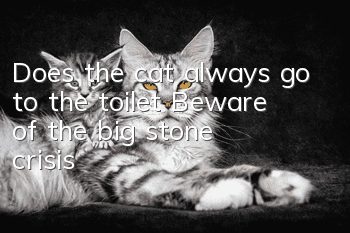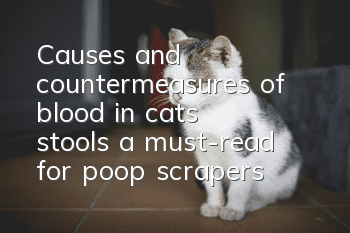Does the cat always go to the toilet? Beware of the big stone crisis

Do you have a cat at home that doesn’t like to drink water? Be careful, it’s not just cats that don’t like to drink water that have stone problems. This kind of problem is actually very common in medical practice. Many anxious and sad cat owners often rush into the animal hospital holding cats with stones, worried about the cat's condition. If you find that your cat often runs into the cat litter but does not urinate or defecate, cat owners should be careful about the health of their cat, because it may be troubled by stones, which may cause difficulties in its excretion system.
1. What are stones?
Cat bladder stones are similar to human stones and look like ordinary pebbles.
2. Why do stones occur?
Rome was not created in a day, and there is usually no single reason for cats to develop stones. The following are the main factors for cats to develop stones:
1. Congenital constitution - Some cats are born more prone to stone formation than others. This is a factor that cat owners have no choice but to do nothing about.
2. Bacterial infection - Normal urine should be sterile, but if the pH value of urine increases due to other factors, bacteria can easily breed and cause stones.
3. Excessive mineral intake - Stones are composed of minerals, crystals and some cells. When a cat has excessive mineral intake, it will be more susceptible to stones than other cats.
4. Too little water intake - Cats don’t like to drink water, which can easily increase the pH value of urine. Once it rises to a certain value, it will be conducive to the growth of bacteria.
5. Some breeds - Some breeds of cats are prone to stones, such as Persian cats, Burmese cats, Himalayan cats, etc. Cat slaves of these types of cat owners should be particularly careful.
3. Who are the high-risk groups for stones?
No matter the breed, cats aged 2 to 6 years old belong to the high-risk group. As long as the cat does not like to drink water, is overweight, and only eats dry food, it is easy to induce stones. In addition, the above-mentioned breeds of cats are also at high risk for stones.
Generally speaking, male cats are more likely to develop stones than female cats because the urethra of male cats is narrower than that of female cats, and stones are more likely to block the urethra; but this does not mean that female cats will not develop stones, although stones are not likely to block female cats. urethra, but the female cat will also feel pain and discomfort when urinating.
IV. Clinical symptoms of stones
The difference between urinary stones and bladder stones lies in the location of the stones. If the stone falls in the bladder and rolls and rubs back and forth, it is a bladder stone; if the stone is stuck in the urethra, it is a bladder stone.Causes obstruction and forms urethral stones. No matter what kind of stone it is, it is a kind of torture for cats.
Once a cat develops stones, the following symptoms will appear:
1. Frequent urination, but only a little or no urine at all;
2. You will exert extra force when urinating. This may be due to stones stuck in the urethra;
3. Wail while urinating;
4. Hematuria;
5. Mentally weak;
6. Poor appetite;
7. Frequently licking the urethral opening and deliberately peeing elsewhere;
(When a cat who originally had a fixed urination position suddenly likes to urinate randomly or changes the position of the toilet, it is a warning sign).
- How should you care for and feed newborn kittens? Kitten care tips for novices!
- How to train a cat to go to the toilet?
- Can two male cats be kept together?
- Daily feeding methods of Singapore cats
- Symptoms of urethritis in male cats
- What causes a pet cat’s belly to be bloated?
- Why do cats vomit?
- How do you differentiate between male and female cats?
- How many years do the five common types of cats live?
- How to train a cat not to go to bed? Three principles for training cats!



